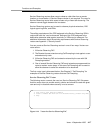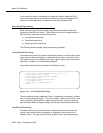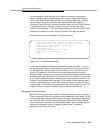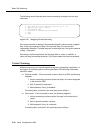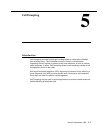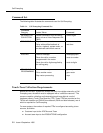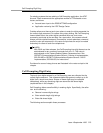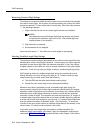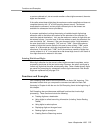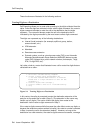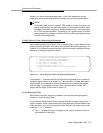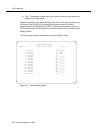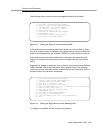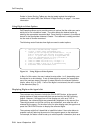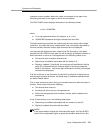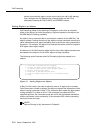
Functions and Examples
Issue 4 September 1995
5-5
or vectors chained to it, do not contain another
collect digits
command, the extra
digits are discarded.
If the caller enters fewer digits than the maximum number specified
and
does not
complete the entry with “#,” a Call Prompting timeout occurs. The timeout
terminates the command, and any digits collected prior to the timeout are
available for subsequent vector processing.
A common application involving the entering of variable-length digit strings
allows the user to dial either the number for the attendant or an extension (to
reach the desired destination.) Let’s say the maximum number of digits that can
be entered is three. In such a case, if the user wishes to reach the attendant, the
user should dial ‘‘0#.’’ However, if the user chooses to dial a 3-digit extension,
the user should dial, for example, ‘‘748’’ and not ‘‘748#.’’ Since the maximum
number of digits that can be dialed in this case is three, dialing ‘‘748#’’ would
cause ‘‘#’’ to be saved as a dial-digit (explained later in this chapter). On the
other hand, if the caller dials ‘‘748#,’’ and if the maximum number of digits that
can be entered is
4
, ‘‘#’’ is not saved as a dial-ahead digit since it is the fourth of
four digits that can be entered in this case.
Entering Dial-Ahead Digits
When digit collection for the current
collect digits
command completes, vector
processing continues at the next vector step. However, the switch continues to
collect any digits that the caller subsequently dials. These “dialed-ahead” digits
are saved for processing by subsequent
collect digits
commands. Dial-Ahead
Digits are explained fully on page 5-14.
Functions and Examples
Call Prompting uses some of the functions found in Basic Call Vectoring. This
becomes evident when you compare the command set table for Basic Call
Vectoring in Chapter 4 with the one for Call Prompting found at the beginning of
this chapter.
Call Prompting also provides some additional functions that involve digit
processing. These functions include the following:
■ Treating digits as a destination
■ Using digits to collect branching information (including Vector Routing
Tables)
■ Using digits to select options
■ Displaying digits on the agent’s set
■ Passing digits to an adjunct
■ Creating Service Observing vectors



